When my son was in grade school, he begged to plant a vegetable garden. I thought it was a great idea; it would get him outdoors and get his hands in the dirt. I diligently tilled a patch of our lawn. We planted tomatoes, lettuce, string beans and green peppers. There was only one problem: my kid was a carnivore and quickly lost interest in our homegrown vegetarian fare.
The next summer, the weeds were chest high, so we turned the garden back to grass. In the process, I discovered stringy vine-like roots, which I yanked out with the rest of the tangled mess.
“I hope you were wearing a long-sleeved shirt,” said my husband when I mentioned the roots. “That might be poison ivy.”
“In our lawn?” I replied doubtfully. “I’m not allergic to it anyway.”
A week later, itchy, oozing blisters erupted all over my arms, torso and neck. The plant’s roots, which had laid dormant under our lawn, beaten back by the mower, had given me my first case of “urushiol-induced contact dermatitis”.
Until the rash disappeared, I was the family pariah. No one wanted to get near me for fear of contracting my malady. They needn’t have worried. I would only have been contagious if I had failed to shower after my anti-gardening exploits. (The blisters contain only water.)
How you get the rash without touching the plant is only one misconception about this toxic plant. There are more:
-
Myth #1: Poison ivy and its cousins, poison oak and poison sumac, are the only poison plants in the United States that cause an itchy rash.
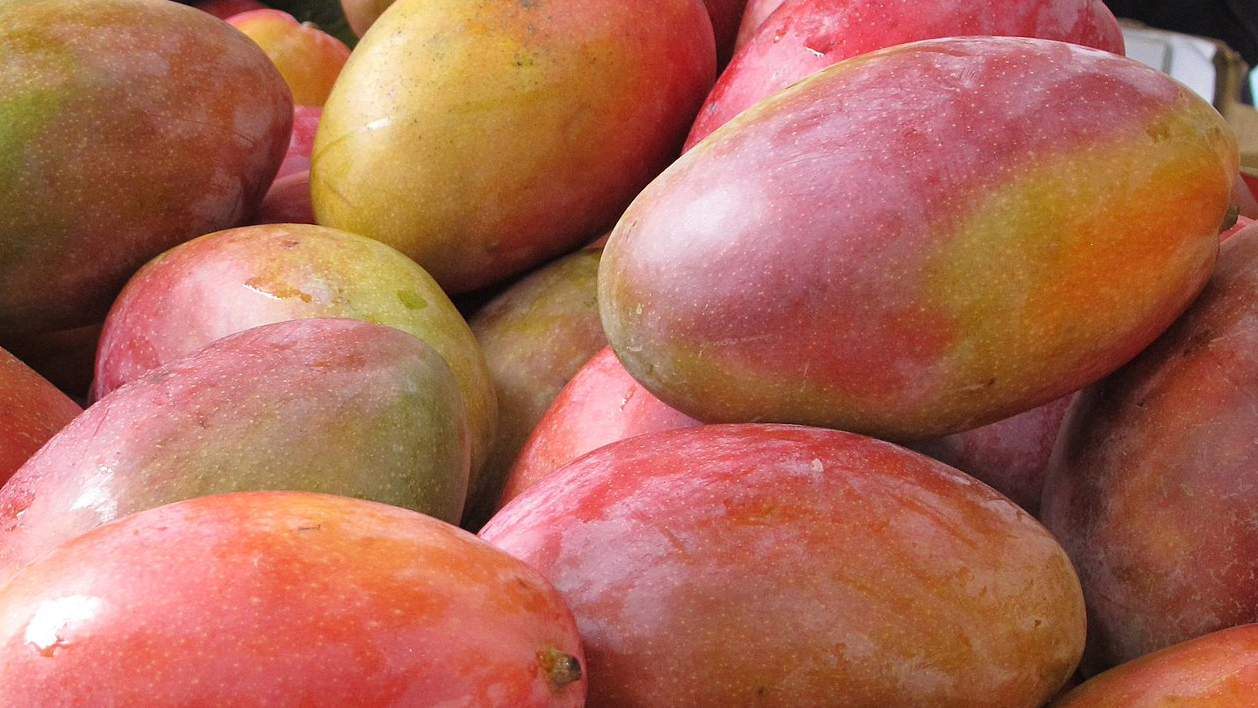
Mangoes in a farmer’s market. By Snapdragon66 [CC BY-SA 4.0] from Wikimedia Commons Poison ivy grows in every state except for Alaska and Hawaii, but you can still get a similar rash in Hawaii if you rub mango skins against your body. You can also get blisters on your lips if you eat the sweet fruit directly off the rind.
Poison ivy and mangoes belong to the Anacardiaceae family. Other plants in this family, such as cashews, also produce a rash-inducing oil. All cashew nuts are shelled and cooked before they arrive at the grocery store, which neutralizes their rash-inducing toxin. Unfortunately, the urushiol oil in poison ivy is resistant to heat.
Interestingly, pistachios, another member of the Anacardiaceae family, doesn’t cause a rash.
-
Myth #2: Animals naturally avoid poison ivy because they sense it’s toxic to touch.
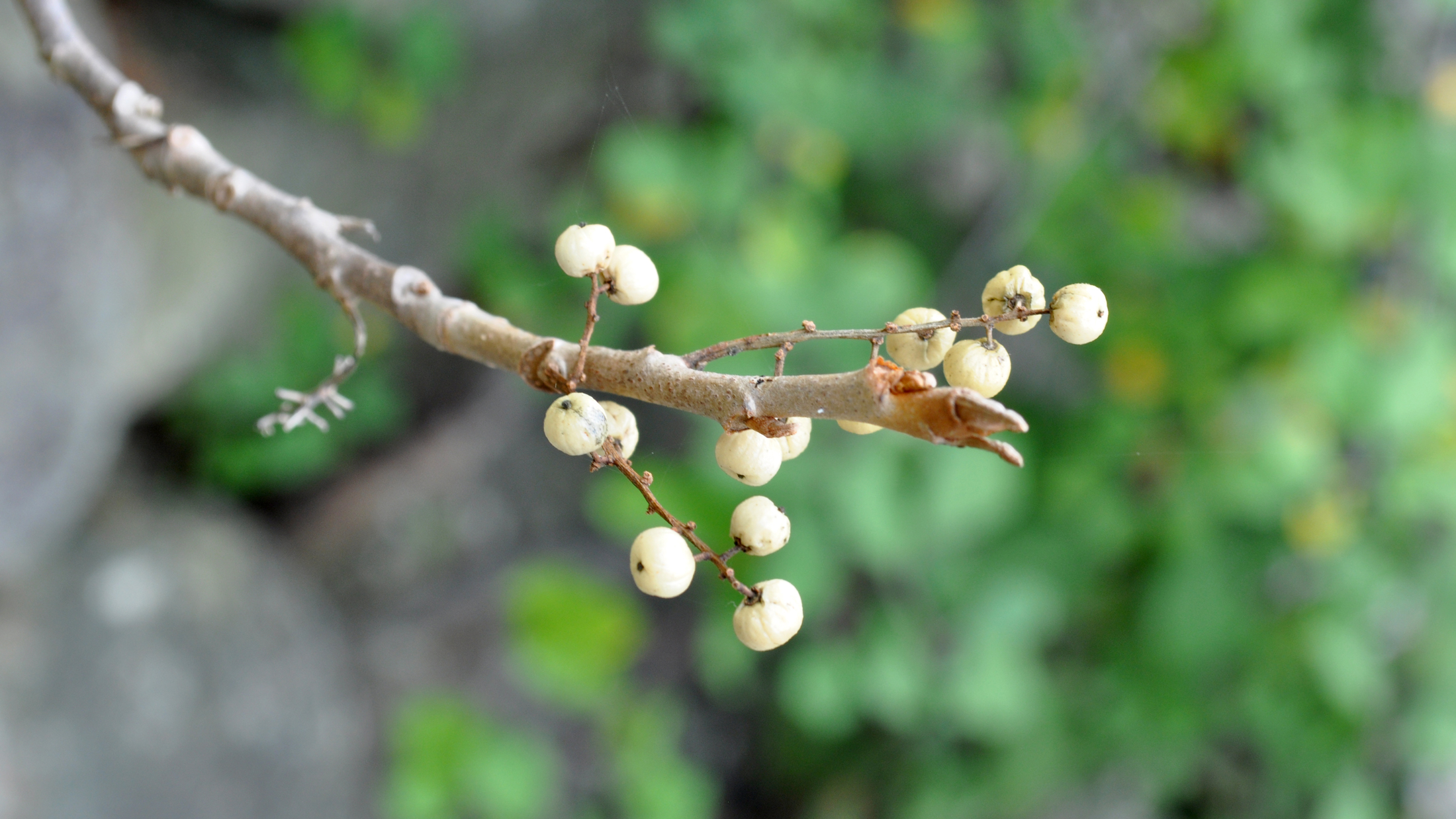
Poison ivy berries. Photo © Lisa Ballard Both mule deer and whitetail deer, who are primarily browsers, seek leafy plants, including poison ivy. According to the South Carolina Department of Natural Resources, birds, including catbirds, chickadees and wild turkeys, sup poison ivy’s smooth, white berries, particularly during the winter when food is scarcer. Black bears, wood rats, raccoons and muskrats also eat the plant’s stems and leaves, and toads hide under it.
Animals may not react to poison ivy, but they can give it to humans. This toxic weed flourishes in open woodlands, especially alongside openings, like footpaths, where it can get sunshine yet not get crushed by hiking boots. If you go hiking with your dog and he romps through a patch of poison ivy, then you pet your dog, your hands pick up the urushiol oil. Until you wash them, any bare skin on your body that you touch can get the rash, and any article of clothing or gear can transfer the itchy toxin to another part of your body or to someone else.
-
Myth #3: If you don’t see three leaves, it’s not poison ivy.
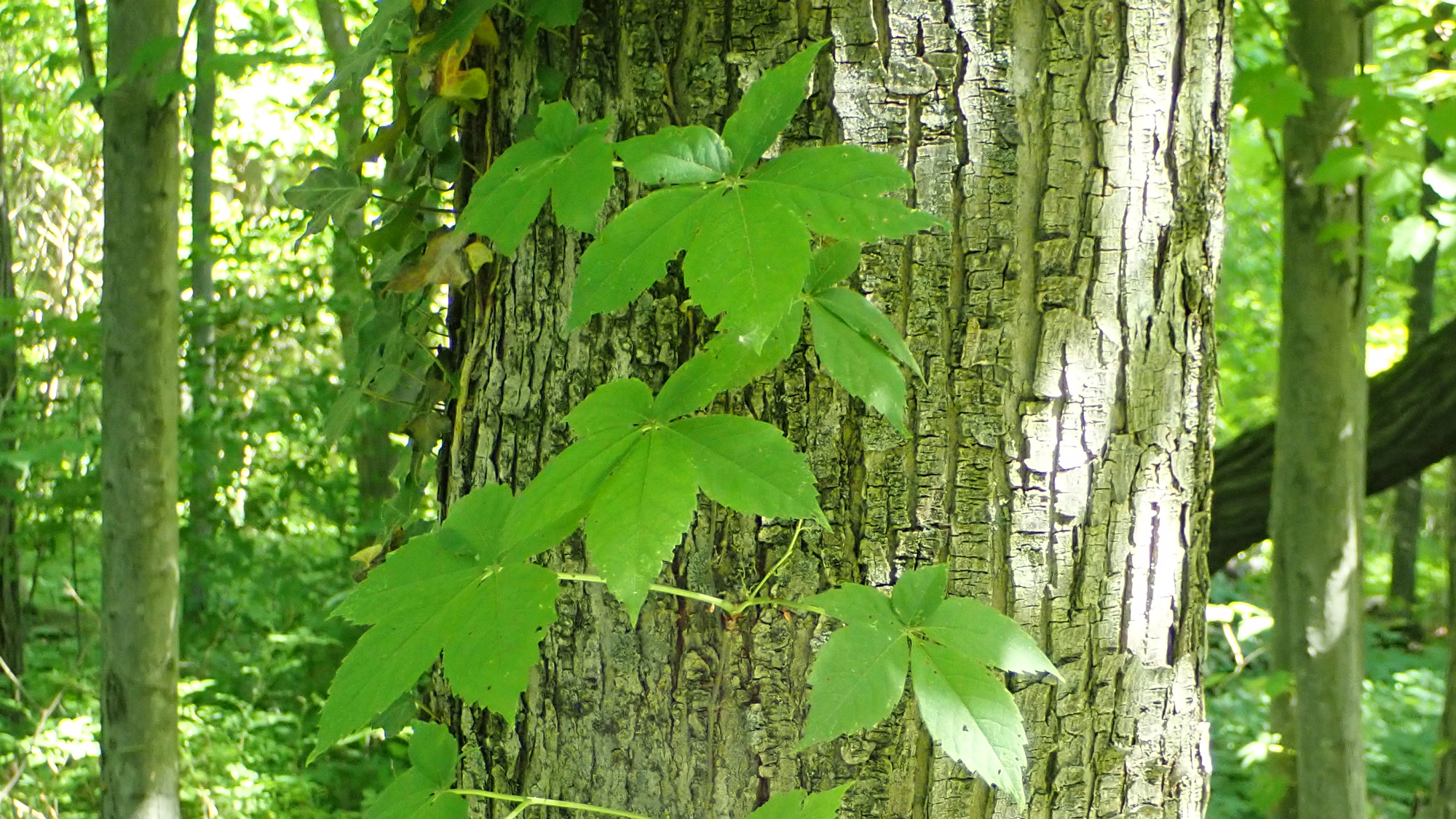
Virginia creeper vine. Photo © Lisa Ballard While the mantra, “leaves of three, let it be”, helps identify poison ivy, which has three toothed, heart- or almond-shaped leaves growing from one point on a stalk, every part of the plant can cause a reaction, including the stems, berries and roots as I inadvertently discovered.
When poison ivy first comes up in the spring, it looks dark red and glossy. The leaves quickly turn the same green as other leaves in a deciduous forest, but if you look closely, there may be tinges of red where the leaves come together. Then, in the fall, they put on a showy display of reds and yellows on par with any maple tree.
This tenacious plant can grow as a stand-alone perennial, shrub, ground cover or vine. As a vine, it sprouts thousands of brown hairs that grasp the bark of its host tree. As it climbs toward the canopy and matures, its stem gets woodier and increases in diameter, up to several inches thick, as if a second tree has grown up hugging the original one.
People often confuse Virginia creeper with poison ivy, but Virginia creeper has five leaves, not three. You don’t want to bathe in Virginia creeper either. Its sap can also cause an annoying rash.
-
Myth #4: I’m not allergic to poison ivy.
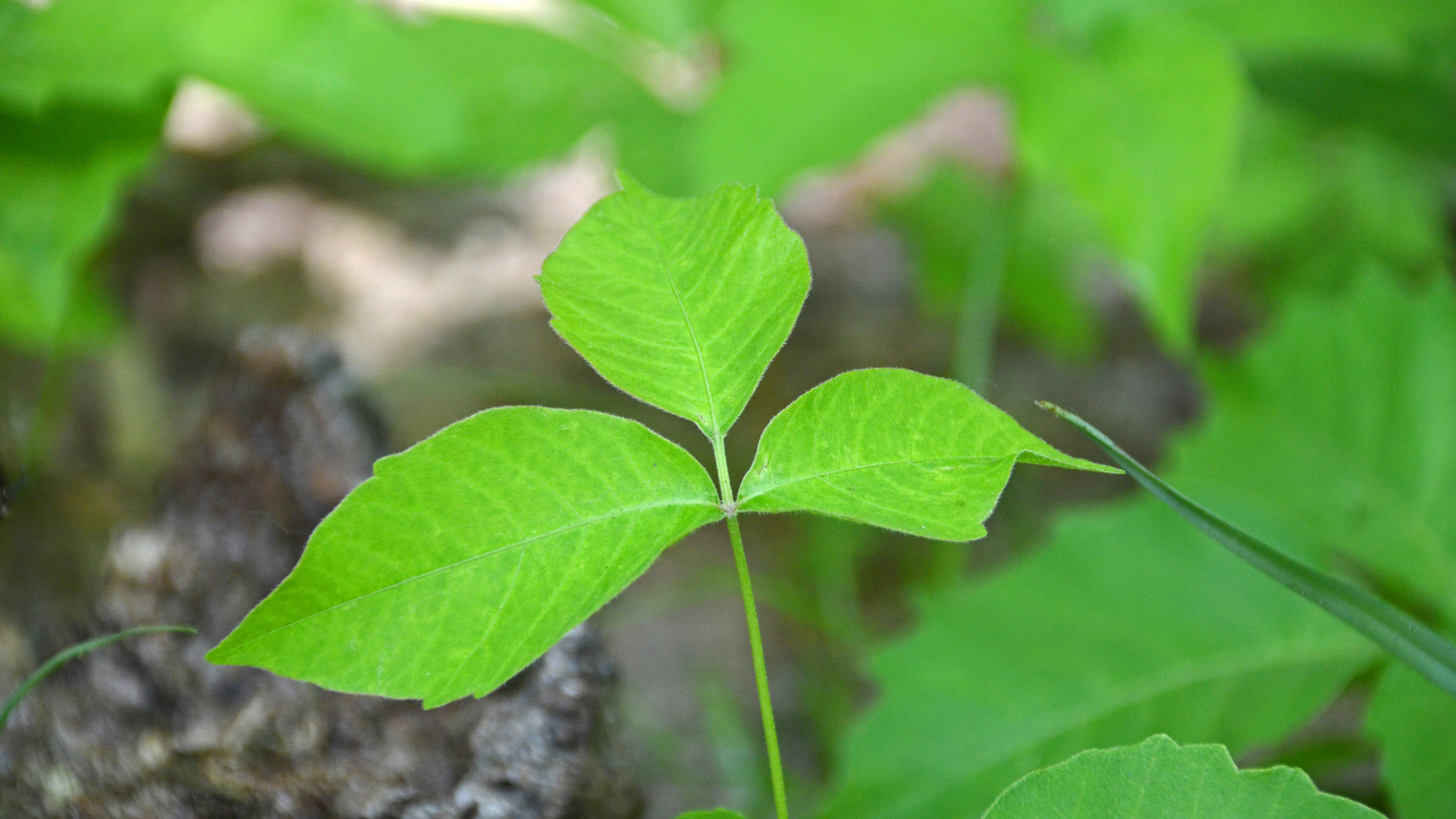
Poison ivy. Photo © Lisa Ballard Don’t kid yourself. According to the American Academy of Dermatology, about 50 million people get the rash each year, making it one of the most-common allergies in the United States.
If you don’t get it the first time you touch it, you will probably get it the second time. Unfortunately, the body doesn’t build immunity. On the contrary, the more times you are exposed to it, the worse the break out. The rash may appear in only a couple of hours on veteran poison ivy sufferers. Among first-timers, it can take up to 10 days.
Urushiol oil binds to the skin in 20 minutes or less, and it’s concentrated stuff. Only one nanogram can trigger the rash. (The average human exposure is around 100 nanograms.) But there’s hope! If you know you’ve touched poison ivy and you immediately wash the exposed area with soap and water, your odds of getting the rash greatly decrease.
If you think a large area of your body may have touched it, take a shower, not a bath. The oil can rise to the top of your bathwater and get on more of your body. If you’re in the backcountry, rinse the area in moving water. Don’t forget to wash your clothes and gear, too.
-
Myth #5: When poison ivy dies, it can’t cause the rash.
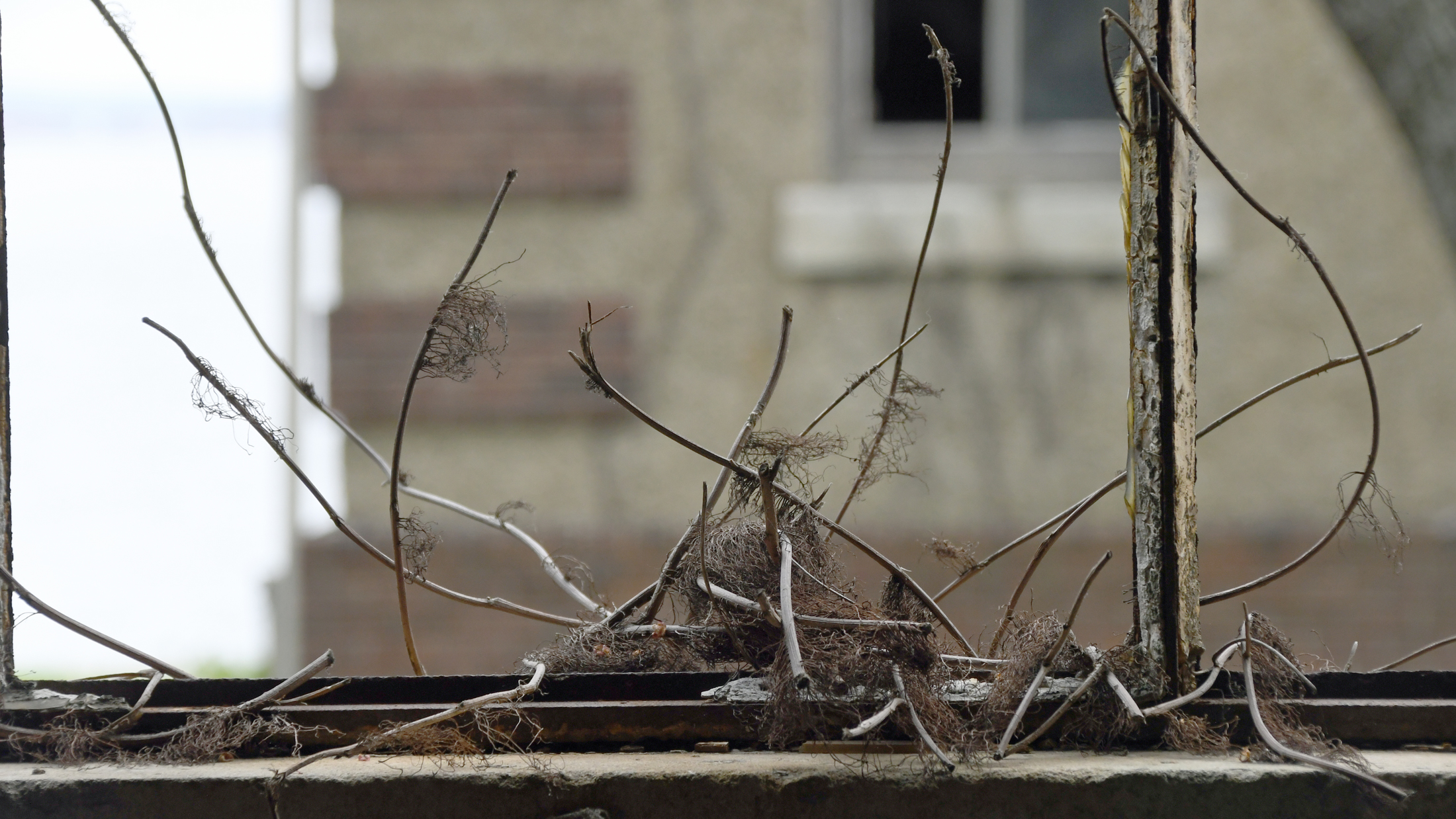
Poison ivy vine on window. Photo © Lisa Ballard Urushiol oil is durable stuff. While the plant won’t produce more of it after it dies, the oil can linger for five or more years. You’ll need a quick trip to the emergency room if you unwittingly burn it in a pile of dead wood, inhaling the smoke, which can carry urushiol oil into your lungs. This nasty toxin can also become airborne from wildfires and lawnmowers.
-
Myth #6: Climate change has no impact on poison ivy.
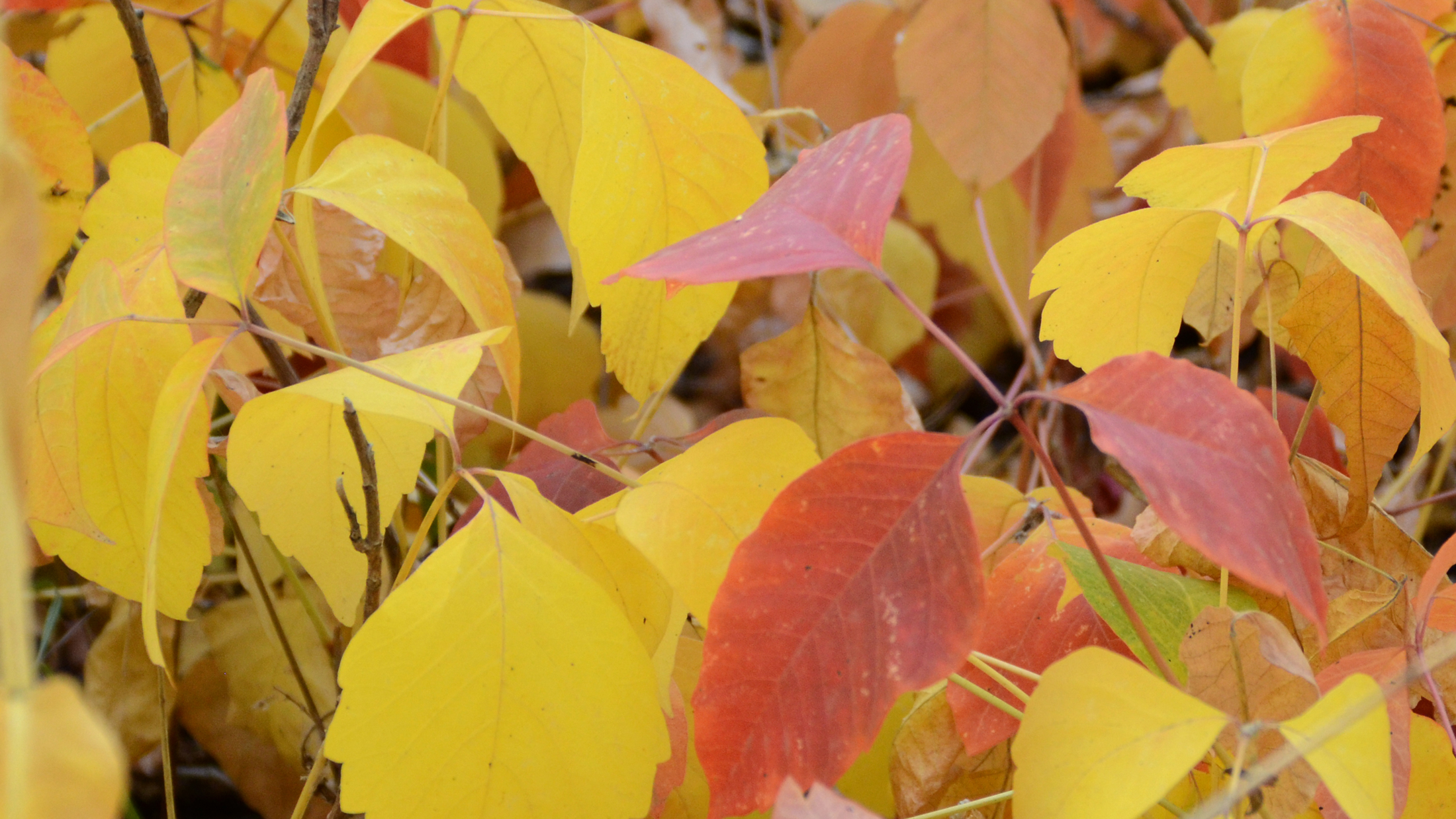
Poison ivy. Photo © Lisa Ballard Historically, backcountry travelers believed they were safe from poison ivy at elevations above 2,500 feet in the East and 4,000 feet in the West, and in desert climates. However, I live at 5,500 feet in the Beartooth Mountains near Yellowstone National Park and see it when I hike. I’ve also seen it in the arid Grand Canyon after a rare, heavy rain storm caused dormant poison ivy to emerge on sandbars.
Poison ivy is creeping higher and drier, but perhaps more unsettling is the fact that it’s getting more potent. According to a 2006 study published by the U.S. Department of Agriculture in Proceedings of the National Academy of Sciences, poison ivy leaves are increasing in size and are coated with more and stronger urushiol oil as levels of carbon dioxide increase globally.
I don’t mean to be an alarmist, just more observant. Whether doing yard work, jogging down a country lane or trekking in the mountains, you can bet I’ll be checking the flora before blithely blundering through it.




I got a dose, don’t remember where I got it. The solution I used was RATHER PAINFUL, as I elected to apply Clorox Bleach directly on all blisters. As I remember, I didn’t SLEEP WELL FOR ABOUT (4) four days.
I always developed a rash when contacting poison oak when I was young. In the early 70’s I worked for the Forest Service and did field work in areas that supported much poison oak. To help prevent us from acquiring a rash, we had an oral poison oak extract available to us that we could take to build up our resistance to acquiring a rash. After a few weeks of taking the extract, I never again acquired a rash as long as I also washed properly at night when I knew I had walked through patches of the poison oak. I understand the extract is no longer available but it sure helped me from getting the rash.
Another item to be careful of is the fruit of the ginkgo tree. I understand you can handle the intact fruit without concern, but if the skin is broken, it can cause blistering.
My parents were foragers and general outdoors people. In her late 60s, my mother and father cleaned up my sister’s back 40 (sq feet, that is). They cut and pulled out vines etc., and then burned them. Apparently, my mother had developed sensitivity to poison ivy over the years and sustained an almost life-threatening response to the contact. She did recover but suffered greatly while living with this severe response to the toxins.
I am a firm believer in Jewelweed, put the juices from it on the poison ivy on your skin and it should be gone within a day… the poison ivy, not your skin.
In grade school, I was one of the kids in the neighborhood who piled the grass that was cut once a year to jump into. Unfortunately it was full of poison ivy that year. I was full of poison ivy to the point of where my eyes were almost closed. The doctor prescribed “Ivy Tox”, one drop in a glass of water gradually increasing the “Ivy Tox” , decreasing the water ( you drink it! horrible taste)I haven’t had much of a problem since then.
Also, I think there is some truth in “washing” your hands in plain dirt to absorb the oils until you can wash off dirt and oil.
BTW, my dermatologist claims that 25% of people who suffer from poison ivy outbreaks are also allergic to calamine lotion. I found this out the hard way when my fevered, crusty rash became too unbearable and went in to see him. That’s when he saw the reaction I’d had to the calamine lotion I’d been slathering all over it in an attempt to get some relief. Live and learn.
Very good information! I understand that at one time American nurserymen sold poison ivy, via catalog, as a luxuriant vine option to the English, who bought it and planted it in their landscapes. They quickly found out that it was not a nice plant to have and went on an eradication drive to rid themselves of this noxious weed. Why don’t we do the same here??
It is a native plant that grows almost everywhere. Eradicating it here is a far different proposition from eradicating it as an ornamental from domestic gardens.
I love the outdoors and hate poison ivy. I have learned to avoid any 3 leaved plant like the plague. But I still get it each year because it is all over North Carolina where I hike and do volunteer outdoor work.
No one has mentioned 2 over the counter medications that have helped me. I keep a bottle of Technu on hand. It cleanses skin of the oil when used in conjunction with a cool shower. Also it can be used to treat clothing before you launder it.
Another is Ivarest, which reminds me of Calamine Lotion, but is more effective to stop the itch. Hydrocortisone cream or lotion of at least 2% helps me get relief.
It doesn’t take much exposure. It is amazing how a tiny lesion can make me suffer and even lose sleep. And the itch lasts for days. It amuses me when people say they are immune to poison ivy. Count your
blessings until you get it!
I am NOT allergic !
That is what my mother said until she had a systemic reaction. Your body changes over time. Don’t tempt it. Mom climbed the apple tree that no one else was picking from. Very bad.
Just be vigilant. Whether playing horseshoes in a friends backyard, or trekking down a trail, keep an eye out for the three-leaved plants and avoid getting close to it.
What are the best ways to kill these plants.
Dig the roots out and set them out to dry. Bury the roots deep in a place you don’t want it to grow.
NEVER BURN IT,
And it’s still one of the most beautiful plants around – especially in fall colors!
Paula
THANK YOU – INTERSTING STUFF
Useful info.
While three leaflets are typical for poison ivy it is not unusual to see five leaflets per leaf. In that regard it is mistaken for Virginia creeper with dire consequences. I know, I was asked to find the location of poison ivy to prevent workers from exposure. I found it growing all over the construction equipment and I-beams the workers were cleaning and moving. The foreman was perplexed because the “leaves were not in threes” but fives. That is correct, it is a myth that leaves must be in threes. Apparently you missed that myth. Oh yeah they are leaflets not leaves.